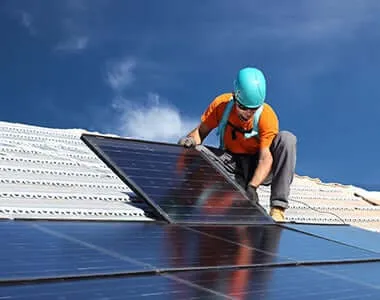off grid solar inverter design
Designing Off-Grid Solar Inverters Key Considerations and Best Practices
As the global demand for renewable energy sources continues to rise, the implementation of off-grid solar systems has become increasingly popular. These independent energy systems allow users to harness solar power without relying on conventional electricity grids, making them ideal for remote locations, camping, or emergency backup. At the heart of these systems is the solar inverter, a critical component that converts the direct current (DC) generated by solar panels into alternating current (AC), which can be used to power household appliances. This article will explore the fundamental aspects of designing off-grid solar inverters, including essential features, considerations, and best practices.
Understanding Off-Grid Solar Inverters
An off-grid solar inverter serves as the brain of a solar power system. It ensures the proper functioning of solar panels by managing the energy conversion and distribution. Unlike grid-tied inverters, off-grid versions must also handle energy storage and distribution for times when solar energy isn't available, such as at night or on cloudy days. As a result, these inverters often integrate with battery systems, providing continuous power supply to homes or devices.
Key Features to Consider
1. Power Rating The inverter’s power rating is crucial as it determines the total load it can support. When designing an off-grid solar inverter, it is essential to calculate the total expected load from all electrical devices that will be connected. The power rating should exceed this load to prevent overloading, ensuring reliable performance.
2. Input Voltage Range Solar panels produce DC electricity at varying voltages depending on their configuration and the amount of sunlight received. An effective off-grid inverter should accommodate a wide input voltage range to ensure efficient operation under varying conditions.
3. Battery Compatibility Off-grid systems often require battery storage for energy reliability. The inverter should be compatible with the type of batteries used, whether they are lead-acid, lithium-ion, or others. Additionally, features like battery management systems (BMS) can help monitor battery health and optimize performance.
4. Efficiency High inverter efficiency is critical to maximize energy conversion from solar panels to usable electricity. Inverters typically operate between 80% and 95% efficiency. Selecting a high-efficiency model reduces energy losses and enhances system performance.
5. Grid-Interactive Capability Though primarily designed for off-grid applications, many modern inverters come with grid-interactive capabilities. This feature allows users to connect to the grid if necessary, providing flexibility and options for energy sales or backup usage.
Design Considerations
off grid solar inverter design

1. Thermal Management Inverters generate heat during operation, which can affect their performance and longevity. Effective thermal management strategies, such as heat sinks or ventilated enclosures, are essential to maintain optimal operating temperatures.
2. Regulatory Compliance Depending on the region, there may be specific regulations and standards governing solar inverter design. Ensuring compliance with local and international standards is important for safety and reliability.
3. User-Friendly Interface A well-designed user interface allows users to easily monitor their system’s performance, including energy production and consumption. Features like LCD displays, mobile apps, and remote monitoring capabilities enhance usability and engagement.
4. Safety Features Safety adds another layer of complexity in inverter design. Incorporating features such as over-voltage protection, over-temperature protection, and short-circuit protection ensures not only the safety of the equipment but also that of the users.
Best Practices for Design and Installation
- Conduct Thorough Load Analysis Before designing an off-grid system, perform a comprehensive load analysis to understand the power requirements and make informed decisions about inverter specifications.
- Choose High-Quality Components Opt for high-quality materials and components to enhance reliability and durability, which is especially important in remote or harsh environments.
- Regular Maintenance and Monitoring Continuous maintenance and system monitoring help identify and troubleshoot issues early, ensuring optimal performance over time.
Conclusion
Designing off-grid solar inverters requires a careful balance of performance, efficiency, and user experience. Understanding essential features and considerations can lead to effective solutions that harness solar energy efficiently, providing users with reliable power supply while contributing to a sustainable future. As the technology continues to evolve, innovations in inverter design will undoubtedly enhance the viability and attractiveness of off-grid solar solutions for wider adoption.
-
String Solar Inverter: The High-Efficiency Solution for Smart Solar EnergyNewsJul.14,2025
-
Revolutionizing Rooftop Energy with the Power of the Micro Solar InverterNewsJul.14,2025
-
Power Independence with Smart Off Grid Solar Inverter SolutionsNewsJul.14,2025
-
On Grid Solar Inverter: Powering the Future with Smart Grid IntegrationNewsJul.14,2025
-
Monocrystalline Solar Panels: High-Efficiency Power for the Future of Clean EnergyNewsJul.14,2025
-
Bifacial Solar Panel: A Smarter Investment for Next-Generation Energy SystemsNewsJul.14,2025







